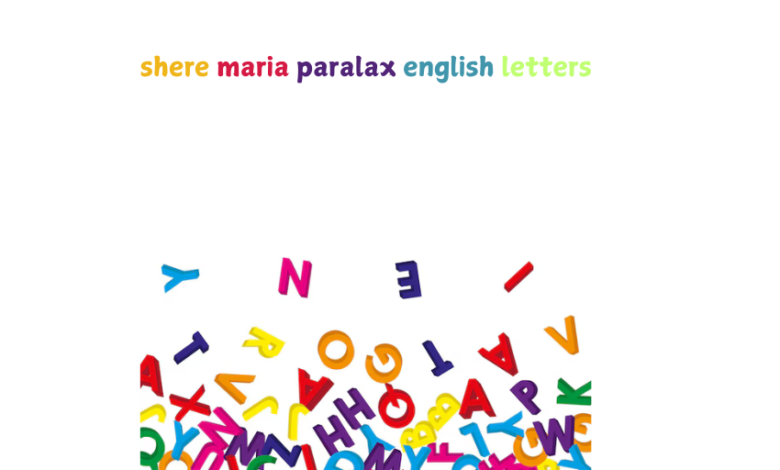Language, like the cosmos, has its own version of parallax — a shift in meaning, interpretation, and understanding depending on the perspective from which it is viewed. Just as astronomers witness stars shift positions when viewed from different points on Earth, the meaning of words and letters can shift based on context, culture, and individual perception.
Shere Maria: A Symbol of Cultural Shifts
Imagine “Shere Maria” as a cultural and literary figure, a symbol for the evolution of language. In historical contexts, “Maria” is a name laden with religious and literary significance. Shere Maria, however, may be more than just a name. Perhaps she represents a pivotal shift in the way language has been used over centuries — the Shere Maria Parallax, if you will, that describes how English letters and words have evolved and continue to shift.
Shere Maria could be an allegorical figure for the adaptability of language. From Old English’s Germanic roots to Middle English’s rich blend of Latin, French, and Norse influences, English has undergone massive transformations. Each shift, whether due to conquest, colonization, or cultural exchange, could be seen as a parallax event — a moment where the perception and use of English changed.
The Parallax of English Letters
The concept of parallax — the change in perspective — can be applied to how we understand the letters of the English alphabet. To most, letters are just building blocks of words. However, when viewed through the lens of different time periods, these same letters take on new life and meaning.
For instance, consider the letter “A.” In its simplest form, it represents the first vowel of the alphabet. Yet, when we explore the letter’s historical evolution, we find a fascinating journey. “A” originated from the Phoenician letter aleph, which symbolized an ox. As the letter was adapted by the Greeks and eventually Latinized into the English alphabet, its meaning and representation shifted completely.
This shift can be seen as linguistic parallax — the evolution of a symbol as it’s viewed through different historical, geographical, and cultural lenses. What once represented an ox in ancient Phoenicia is now a letter that stands at the forefront of the English language.
Language in Motion: The Shere Maria Parallax
What, then, is the Shere Maria Parallax? It is the understanding that language, like the stars, is in constant motion.Words, meanings, and letters shift over the years, common via lifestyle, era, and human innovation. In the present day age, with the upward push of digital verbal exchange and global interconnectedness, this parallax is greater said than ever. English, as quick as confined to the British Isles, is now a international lingua franca, constantly transferring in dialects, slang, and usage round the region.
As we gaze upon the ever-shifting nature of language, we witness the Shere Maria Parallax in motion — a reminder that at the identical time as letters and terms can also moreover seem static, they may be continuously in flux, relying at the mind-set from which they may be taken into consideration.
In this ever-evolving universe of language, Shere Maria may represent the past, present, and future of English letters. And as with parallax, understanding English requires us to shift our viewpoint and appreciate the subtle changes that define it.


